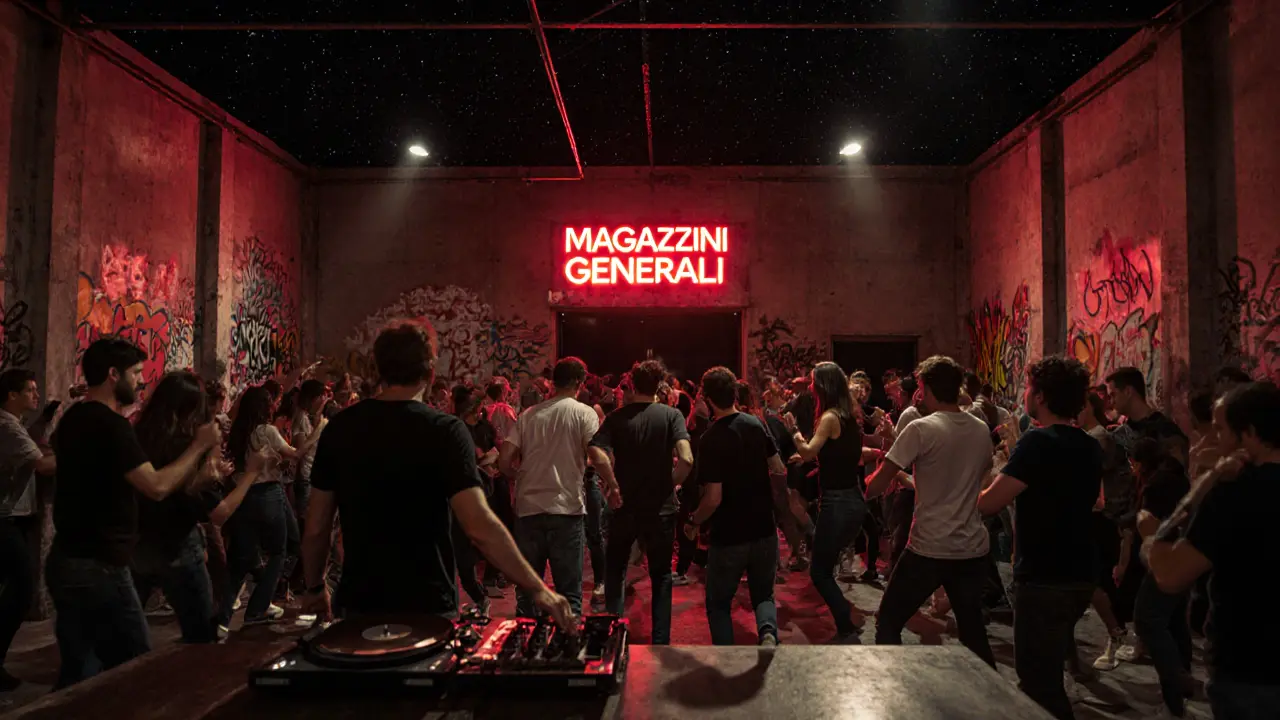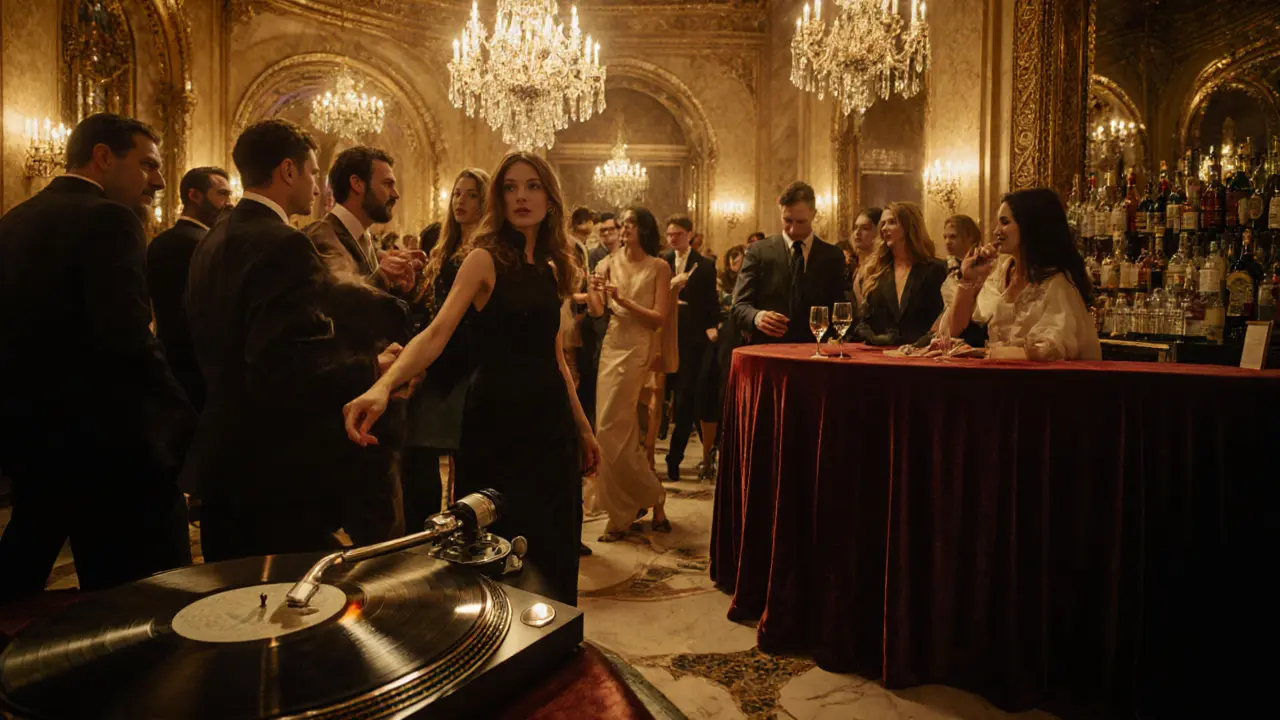2 Nov 2025
- 0 Comments
Milan doesn’t just dress well-it knows how to party. By 10 p.m., the city’s streets hum with energy. By 2 a.m., you’re dancing in a converted 1920s factory where the bass hits like a heartbeat. This isn’t just a city that sleeps late; it’s one that wakes up at night. If you’re looking for the real Milan after dark, skip the tourist traps and head where the locals go.
Where the Locals Go: Navigating Milan’s Nightlife Zones
Milan’s nightlife isn’t scattered-it’s clustered. Each neighborhood has its own vibe, and knowing where to go saves you hours of wandering. The four key zones are Brera, Porta Nuova, Zona Tortona, and Isola.
Brera is the classic choice. Cobblestone alleys, candlelit wine bars, and jazz lounges make it perfect for a slow start. Try Bar Basso, where the Americano was invented in 1945. It’s not flashy, but the crowd? Pure Milanese. You’ll see lawyers, artists, and designers sipping negronis like it’s a daily ritual.
Porta Nuova is sleek, modern, and loud. This is where the fashion crowd heads after dinner. Think glass towers, rooftop bars with skyline views, and DJs spinning house music until dawn. Terrazza Aperol on the 25th floor of the Unicredit Tower is the spot. It’s expensive-€18 for a spritz-but the view of the Bosco Verticale lit up at night? Worth it.
Zona Tortona, near the Design District, is where Milan’s creative types unwind. It’s less polished, more experimental. Bars here double as art galleries. La Cucina di Nonna Papera serves cheap wine and pasta, then turns into a basement club after midnight. No sign. Just follow the bass.
Isola is the new kid on the block. Once an industrial zone, it’s now Milan’s most authentic nightlife hub. Think vinyl shops, underground techno clubs, and pop-up bars in abandoned warehouses. This is where you’ll find the real underground scene-no bouncers checking your designer bag, just people who love music.
Top 5 Clubs That Actually Matter
Clubs in Milan aren’t about name-dropping. They’re about sound, space, and soul. Here are five that don’t just host parties-they define them.
La Scala Club isn’t near the opera house. It’s in a converted 1950s cinema in Isola. The sound system? Custom-built by Italian engineers. The crowd? Mix of DJs from Berlin, Milanese students, and older collectors who still remember the 90s rave scene. Entry is €15 after midnight. No dress code. Just bring your ears.
Magazzini Generali is a warehouse-turned-club in the Porta Genova area. It’s open only on weekends, and only if the weather’s right. The roof opens to the sky. You’ll find techno, experimental electronica, and occasional live noise sets. It’s not for everyone. But if you’ve ever wanted to dance under stars with 800 strangers who all know the same obscure track? This is it.
Opium is the most glamorous. Located in a 19th-century palazzo near the Duomo, it’s where models, influencers, and international artists gather. The lighting shifts with the music. The playlist? Rare disco edits and deep house. It’s not cheap-€30 cover on weekends-but it’s the only place in Milan where you’ll hear a 1982 Italo-disco track followed by a new track from a Milan-based producer.
Blu is a hidden gem in Brera. It’s small, dark, and always packed. No sign outside. Just a blue door. Inside, it’s all analog synths and live percussion. The owner, Marco, used to tour with Italian indie bands. He books only artists he’s met in person. You won’t find this on any tourist list.
Levante is the exception. It’s not a club-it’s a rooftop lounge that turns into a dance floor after 1 a.m. The crowd is older, more relaxed. Think jazz fusion, not EDM. It’s the place where people who’ve been out since 9 p.m. still want to keep going. The cocktails? Handmade with local herbs. The vibe? Like you’ve stepped into a 1960s Italian film.
Bars That Don’t Just Serve Drinks
A good bar in Milan doesn’t just pour alcohol. It tells a story.
Il Gatto Nero in Brera is a speakeasy hidden behind a bookshelf. You need to know the password. It changes weekly. Ask for the bartender’s name-Luca-and he’ll give you the clue. The cocktails are named after Milanese poets. The gin comes from a distillery in Lombardy. One drink here costs €22. You’ll remember it for years.
Bar Basso isn’t just historic. It’s a living museum. The same bartender has been there since 1987. He still makes the original Americano with the same ratio: 1 part Campari, 1 part sweet vermouth, soda on top. No ice. No garnish. Just the way it was in 1945.
Bar del Fico in Isola serves wine by the glass from small, family-run vineyards. The owner, Sofia, travels to the Alps every spring to meet the growers. She doesn’t carry any big-brand wines. Everything here is under €10 a glass. You’ll taste flavors you’ve never heard of-like Teroldego or Vespaiolo.
La Bottega del Vino is a wine shop that turns into a bar at 7 p.m. You pick a bottle, they open it, and you sit at a wooden table with strangers. No menu. Just questions: “What do you like? Fruity? Earthy? Bitter?” Then they pour you a taste. It’s like a wine class you didn’t know you needed.

What to Wear (And What Not To)
Milan doesn’t have a strict dress code. But it has unspoken rules.
At Opium or Terrazza Aperol, you’ll need smart casual. No sneakers. No hoodies. No baseball caps. Think tailored trousers, a button-down, or a simple dress. You don’t need Gucci-but you do need to look like you care.
At Magazzini Generali or La Scala Club, jeans and a clean T-shirt are fine. Boots or loafers. No flip-flops. No neon. This isn’t a festival. It’s a space for music, not fashion.
And here’s the one rule that applies everywhere: Don’t wear your tourist outfit. That means no fanny packs, no selfie sticks, no “I ❤️ Milan” shirts. Locals notice. And they don’t invite tourists to their secret spots.
When to Go and How to Get In
Timing matters more than you think.
Dinner in Milan ends late-usually 10:30 p.m. or later. Clubs don’t fill up until 1 a.m. Arrive before midnight and you’ll be standing at the bar. Arrive after 2 a.m. and you’ll wait 45 minutes for a drink.
Most clubs don’t take reservations. But here’s a trick: call the bar before you go. Ask for the DJ. Ask what music they’re playing. If they answer with enthusiasm, you’re in the right place. If they say, “It’s just a party,” walk away.
On weekends, lines form early. But if you’re with a local, you’ll get in faster. If you’re alone, show up with confidence. Don’t look around nervously. Milanese people respect quiet self-assurance.
And never, ever try to bribe the bouncer. It doesn’t work. And you’ll be banned from every club in the city.

What You Won’t Find in Milan
Milan doesn’t have bottle service clubs like Miami. No VIP rooms with velvet ropes. No dancers on podiums. No EDM DJs spinning the same 10 tracks every night.
You won’t find karaoke bars. Or sports pubs with giant TVs. Or chains like Hard Rock or Irish pubs. Milan’s nightlife is local. It’s personal. It’s built on taste, not trends.
If you’re looking for a place where you can scream your favorite pop song into a microphone? Go somewhere else. If you want to hear a rare 1978 disco remix played on vinyl by someone who found it in a Milanese flea market? You’re in the right city.
Final Tips for a Perfect Night Out
- Start early. Dinner at 9 p.m., drinks at 10:30, club at 1 a.m.
- Carry cash. Many small bars don’t take cards after midnight.
- Take the metro. Taxis are expensive and hard to find after 2 a.m.
- Don’t drink too fast. Milanese nights last 8-10 hours. Pace yourself.
- Ask questions. Locals love sharing their favorite spots. Just be polite.
Milan’s nightlife isn’t about being seen. It’s about being present. You won’t leave with a photo of yourself on a rooftop. But you might leave with a new favorite song, a conversation with a stranger who became a friend, or the memory of dancing in a warehouse under the stars.
That’s the Milan night you’ll remember.
What’s the best night to go out in Milan?
Friday and Saturday nights are the busiest, but Tuesday and Wednesday can be better if you want fewer crowds and more authentic vibes. Many clubs host special events on weekdays-live jazz, vinyl-only sets, or guest DJs from abroad. If you’re not into crowds, skip the weekend.
Is Milan nightlife expensive?
It can be, but it doesn’t have to be. Rooftop bars like Terrazza Aperol charge €18 for a spritz, but local wine bars in Isola serve glasses for €5-8. Club entry ranges from €10 to €30, depending on the venue. Many places offer free entry before midnight. Stick to the neighborhood spots and you’ll spend less and enjoy more.
Can I go out in Milan if I don’t speak Italian?
Yes, absolutely. Most bartenders and club staff speak English, especially in tourist-friendly areas. But learning a few phrases-like “Un bicchiere di vino, per favore” or “Dove si balla qui?”-goes a long way. People respond better when you try. And in the underground spots, a smile and a nod work better than any phrase.
Are there any age restrictions?
Most clubs require you to be 18 or older. Some upscale venues like Opium enforce 21+. You’ll need ID, even if you look older. Don’t rely on a passport-bring a government-issued photo ID. Bouncers check carefully, especially on weekends.
What’s the best way to get around at night?
The metro runs until 1:30 a.m. on weekdays and 2:30 a.m. on weekends. After that, take a taxi or use Bolt or Uber. Walking is safe in central areas like Brera and Porta Nuova, but avoid Isola alone after 3 a.m. unless you know the area. Always check the last metro times-missing it means a €25+ taxi ride.
Is there a dress code for all Milan clubs?
No universal dress code, but each club has its own. Upscale places like Opium expect smart casual-no sneakers, no shorts. Underground spots like La Scala Club allow jeans and clean tees. When in doubt, dress a little sharper than you think you need to. It’s better to be slightly overdressed than turned away at the door.
Are there any gay-friendly venues in Milan?
Yes. Milan is one of Europe’s most LGBTQ+-friendly cities. Bar Rosso in Brera is a long-standing gay bar with drag nights and live music. Club 7 in Porta Venezia is a popular dance spot with a mixed crowd. Many mainstream clubs like Opium and La Scala Club welcome everyone-no questions asked. The vibe is inclusive, not segregated.
What’s the latest time I can stay out?
Most clubs close by 5 a.m., but some, like Magazzini Generali, stay open until sunrise-around 7 a.m. on weekends. Bars in Brera and Isola often serve coffee until 6 a.m. If you’re still going strong, head to a 24-hour espresso bar like Caffè Cova near the Galleria. It’s the perfect way to wind down.
